

Introduction to HDMI Connectors
Catalog
What is an HDMI Connector?Primary Features of HDMI ConnectorsWhat's the Purpose of an HDMI Connector?Types of HDMI ConnectorsFemale and Male HDMI ConnectorsStraight and Right-Angle HDMI ConnectorsApplications of HDMI ConnectorsHDMI Connectors PinoutsFrequently Asked QuestionsWrapping UpRelated ArticlesThe HDMI connector is a crucial input-output hardware component found in a variety of contemporary entertainment and communication devices. It allows HDMI cables to carry uncompressed digital signals from a compatible A/V source to the connected receiver or display device, ensuring a high-quality transmission of audio and video content. Do you know what is an HDMI connector used for? Read the article from JMBom to boost your understanding.
What is an HDMI Connector?
HDMI, which stands for High-Definition Multimedia Interface, is a proprietary interface designed for the transmission of uncompressed video data and either compressed or uncompressed digital audio data. It facilitates the transfer of these data types from HDMI-enabled source devices, such as display controllers, to compatible devices like computer monitors, video projectors, digital TVs, or digital audio equipment. Acting as a digital alternative to traditional analog video standards, HDMI has become an essential part of modern entertainment and communication technologies.
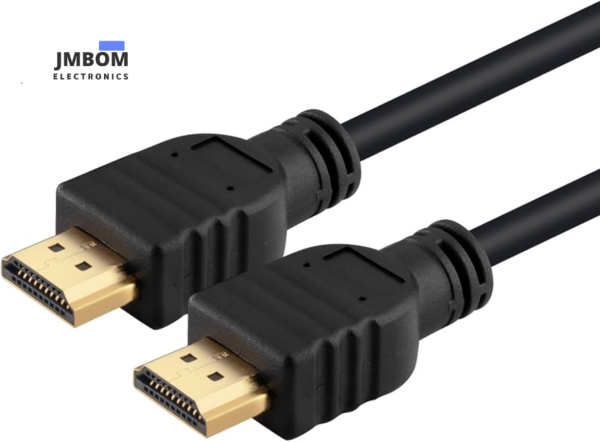
HDMI connector
Primary Features of HDMI Connectors
HDMI connectors operate on a familiar plug-and-socket mechanism, similar to other common cable connections. While HDMI and USB may appear similar in design, HDMI connectors are generally larger in size.
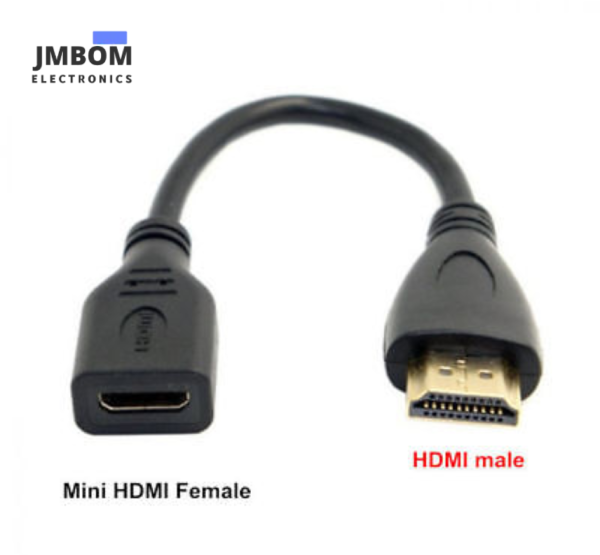
male and female HDMI connector
In the realm of audio-video cables, both male and female HDMI connectors exist to accommodate different sides of the interface, ensuring a complete connection. Male HDMI connectors, which have an extending pin arrangement, are smaller in size. Conversely, female HDMI connectors are designed to be larger and feature a recessed area to accommodate the male pins.
What's the Purpose of an HDMI Connector?
In most typical use cases, HDMI cables and connectors of various kinds are employed to transmit audio and video signals simultaneously from a source to a receiver or display. That's their original intended function, sparing users the hassle of connecting multiple separate sets of cables (or the much more cumbersome DVI connectors) to carry both types of signals at the same time.
Nevertheless, HDMI can also be utilized exclusively for audio or video signals thanks to its extensive backward compatibility with prior connection standards. This is especially advantageous because, with the proper adaptor in place, HDMI cables and connectors can interconnect hardware devices featuring a variety of different port types.

HDMI
Audio and Video Applications
The initial aim of HDMI was to upgrade and supersede the existing DVI connector standard that was still prevalent on computer monitors and other video display equipment. DVI is solely a video output, and while HDMI can carry audio and video signals together, it is electrically compatible with DVI.
HDMI-DVI connectors enable users to attach HDMI cables to more contemporary screens or receivers lacking DVI ports. This ensures the image is displayed flawlessly. Likewise, by utilizing the appropriate adaptor, HDMI audio connectors can also be used to convey solely audio signals from devices equipped with older-style component audio ports.
Types of HDMI Connectors
At present, HDMI technology offers five distinct standard connector types for its cables:
Type A(standard): This is the conventional HDMI connector found in most devices.
Type B (dual link): Designed for dual-link applications, it is not widely used in mainstream consumer electronics.
Type C (mini): A smaller version known as the mini HDMI connector.
Type D (micro): Even more compact, this is the micro HDMI connector.
Type E(the Automotive Connection System): Specifically created in-vehicle entertainment and control systems.
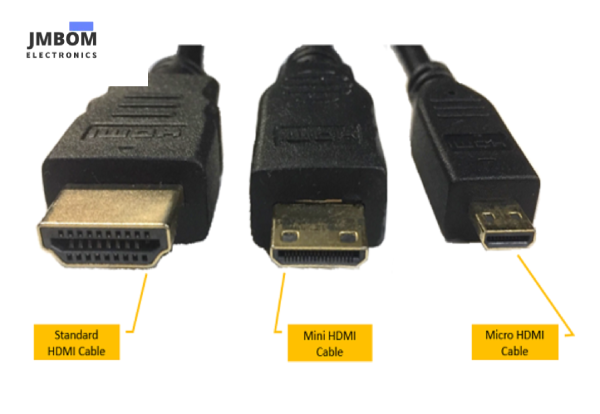
Types of HDMI Connectors
The physical dimensions of these HDMI connectors vary significantly, making them relatively easy to distinguish. For those unfamiliar with HDMI subtype designations, the variety might seem overwhelming. However, for the majority of residential and commercial uses, you will primarily encounter HDMI Types A, C, and D—covering the standard, mini, and micro. These are the most common types required for everyday connections.
Standard HDMI connector
Standard HDMI connector is the quintessential and widely recognized standard in the HDMI family, being the most prevalent and accessible among the five HDMI connector sizes. This connector type is the go-to choice for the majority of users due to its ubiquity. You can find standard HDMI connector on a vast array of modern devices, including televisions, monitors, gaming consoles, and desktop computers from nearly every major brand.
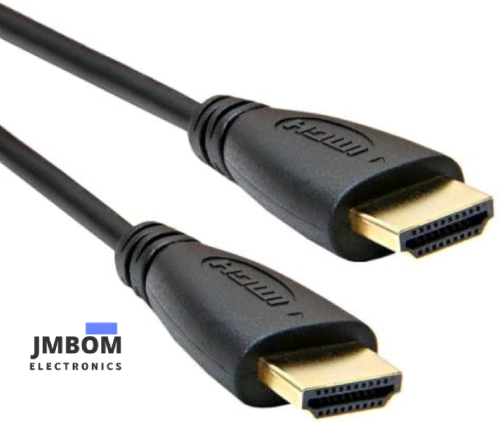
Standard HDMI connector
Mini HDMI connector
Mini HDMI connector are a more compact version of standard HDMI connector, designed for use in portable devices. They are frequently found in a variety of equipment, such as DSLR cameras, camcorders, larger tablets, and satellite navigation systems.
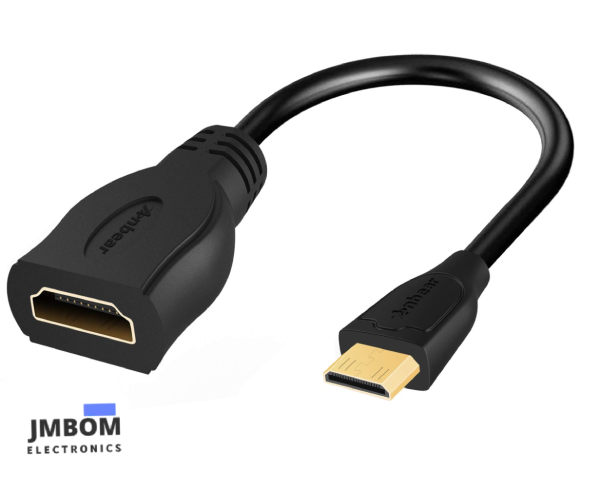
Mini HDMI connector
Micro HDMI connector
Micro HDMI connectors, are smaller in size compared to both the standard and mini HDMI connectors. Despite their reduced dimensions, they maintain the 19-pin configuration, albeit arranged differently to accommodate their compact form factor. These connectors were specifically designed for use in extremely compact and highly portable devices, such as smartphones, to facilitate audio and video connectivity.
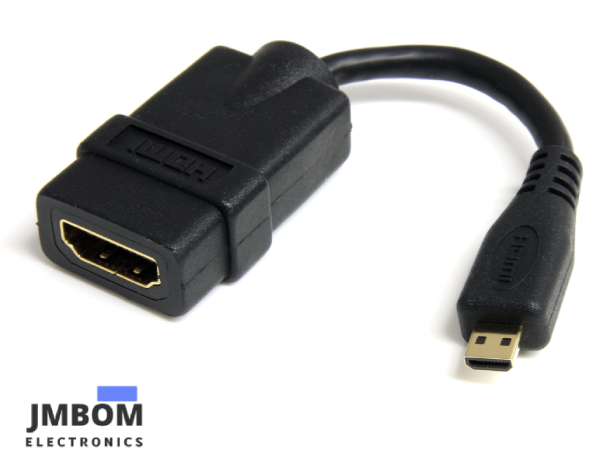
Micro HDMI connector
Female and Male HDMI Connectors
HDMI female connectors are typically integrated into both the signal source and the receiving device as receptacles for a male-end cable. In the most common setup, a cable with two male ends is inserted into two female receptacles at the same time. This provides a direct wired link between the source and display devices.
Since female HDMI connectors are usually recessed into the bodies of TVs, gaming consoles, projectors, computers, and monitors—and because they are more prone to deformation under excessive strain than male connectors—they are more commonly sold as standalone replacement parts.
Male HDMI connectors, in contrast, are generally provided as fixed components at either end of nearly every commercially available HDMI cable. In many cases, it is simpler and more cost-effective to replace a damaged male connector by swapping in a new cable. However, this is not always feasible. Some high-end HDMI cables can be relatively expensive (especially the longer and more robust types), and in these instances, it can be significantly cheaper to rewire a new male connector rather than replace the entire cable run.
Moreover, many people choose to run HDMI cables behind walls or between floors of a building. It can be a complex process to remove and reinstall these cables if one of the male connectors gets damaged. For this reason, most reliable suppliers that stock female HDMI sockets also offer matching male components.
Straight and Right-Angle HDMI Connectors
When inserted, a standard straight HDMI connector extends horizontally out of the female socket, similar to a standard USB cable or 3.5mm headphone jack. This is the most common type of HDMI connector and is generally suitable for most setups.
However, in situations where space directly in front of an HDMI socket is limited, right-angled HDMI connectors are also available for purchase. These connectors are designed to point directly downward upon exiting the socket, allowing the connector and cable to sit flush against the device.
HDMI right-angle connectors can be particularly useful if a TV or computer is placed with its I/O ports very close to a wall, or if the positioning of the source and receiver devices would strain a straight HDMI connection. They can also be helpful for improving overall cable management behind many device types, keeping things tidy and easy to access.
Applications of HDMI Connectors
For the vast majority of conventional use cases, HDMI cables and connectors are deployed to simultaneously convey audio and video signals from an output source to an input receiver or a display device. This is their primary function, designed to eliminate the need for users to handle multiple, separate cables—or the more cumbersome DVI connectors—to achieve the transmission of both signal types in a single setup.
However, HDMI can also be employed solely for audio or video signals in certain situations, thanks to its extensive backward compatibility with older connection standards. This feature is particularly advantageous, as it enables HDMI cables and connectors to interface with various hardware devices using the appropriate adapter, accommodating a wide range of port types.
HDMI Connectors Pinouts
All HDMI connector types contain 19 pins. However, the pin configuration for the signals they transmit varies between types, which allows for backward compatibility within a specific type. But it's essential to ensure that the correct pin numbers are utilized for the various signals when designing or manufacturing cables. Since connectors of different types cannot be mated, there are no concerns regarding cross-connection issues.
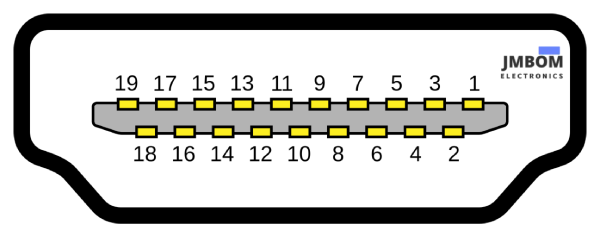
HDMI connectors pinouts
Frequently Asked Questions
Do HDMI connectors go bad?
HDMI cables do not come with a predefined lifespan, but they can degrade or become non-functional after extended periods of use. Typically, well-constructed HDMI cables can endure for approximately a decade or more when cared for properly. The specific duration that HDMI cables will last depends on various factors, including their quality of construction and the frequency of their usage.
What's better, HDMI or DVI?
While DVI is adequate for older electronics that do not require audio transmission, HDMI has emerged as the preferred standard today because of its versatility and ability to handle both audio and video signals.
What is HDMI and How Does it Function?
HDMI, which stands for High-Definition Multimedia Interface, is a digital interface for transmitting high-quality, uncompressed video and audio signals between devices. It is a widely adopted standard for connecting devices such as computers, monitors, gaming consoles, and televisions.
The way HDMI operates involves converting digital signals into electrical impulses that travel through HDMI cables. It utilizes TMDS (Transition Minimized Differential Signaling) technology along with multiple data channels to convey audio, video, and control signals. TMDS encodes digital signals into binary code, consisting of 0s and 1s, and transmits them as differential pairs to minimize signal interference and maintain high-quality transmission.
Can HDMI Transmit Audio and Video Signals at the Same Time?
Absolutely, HDMI is capable of transmitting both audio and video signals simultaneously over a single cable. This feature eliminates the need for separate audio connections in the majority of setups.
What are the Various HDMI Connector Dimensions?
The dimensions of HDMI connectors differ based on the type:
- Type A HDMI connectors are approximately 13.9mm by 4.45mm in size.
- Mini HDMI connectors (Type C) have dimensions of around 10.42mm by 2.42mm.
- Micro HDMI connectors (Type D) are the smallest, with dimensions of about 6.4mm by 2.8mm.
Is it Possible to Convert HDMI to Other Video or Audio Formats?
Converting HDMI to other formats typically requires additional adapters or converters, depending on the specific conversion required. For instance, converting HDMI to VGA or HDMI to DVI would necessitate the use of appropriate adapters that support the conversion.
Wrapping Up
In conclusion, the HDMI connector has revolutionized the way we connect and experience audio and video content across a spectrum of devices. Understanding the different types of HDMI connectors and their applications not only helps in selecting the right cable for your needs but also ensures compatibility and optimal performance.
Related Articles
Introduction to HDMI Connectors
A Complete Guide to Fiber Optic Connectors
Audio Connectors:Description,Types and Applications
Active Optical Connectors: Features, Types, and Applications
Subscribe to JMBom Electronics !













